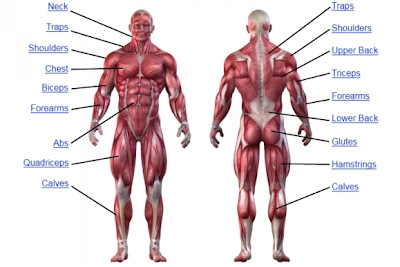Vitamin C
 Vitamin C is water soluble and it is necessary for normal growth and development in human.
Vitamin C is water soluble and it is necessary for normal growth and development in human.Vitamins which are water-soluble, dissolve in water. It doesn't store in the body. Leftover amounts of the vitamin C pass out of the body through the urine. That means you need a continuous supply of such vitamins in your diet.
Alternative Names
Ascorbic acid, Dehydroascorbic acid
Function
Vitamin C is needed and as well as useful for the growth and repair of tissues in all parts of your body.
It is used to :-
1. Help to make an important protein used to make skin, tendons, ligaments, and blood vessels
2. Heal the wounds and form scar tissue
3. Repair and maintain bones, cartilage, and teeth
4. Vitamin C is in one of many antioxidants. Antioxidants are nutrients that block some of the damage due to free radicals.
5. Free radicals are made when your body breaks down food or when you are exposed to tobacco smoke or radiation.
6. The buildup of free radicals over time is largely responsible for the aging process.
7. The body is not able to make vitamin C on its own, and it does not store vitamin C. It is therefore important to include plenty of vitamin C-containing foods in your daily diet.
8. Vitamin C reduces Free radicals. Which may play a vast role in cancer, heart disease, and conditions like arthritis.
9. For many years, vitamin C has been a popular home remedy for the common cold.
10. Research shows that for most people, vitamin C supplements or vitamin C-rich foods do not reduce the risk of getting the common cold.
11. Taking a vitamin C supplement after a cold starts does not appear to be helpful.
12. People who take vitamin C supplements regularly might have slightly shorter colds or somewhat milder symptoms.
13. All fruits and vegetables contain some decent amount of vitamin C.
Foods that are the highest sources of vitamin C include:
Cantaloupe
Papaya
Pineapple
Citrus fruits and juices, such as orange and grapefruit
Kiwi fruit
Mango
Strawberries, raspberries, blueberries, cranberries
Watermelon
Broccoli, Brussels sprouts, cauliflower
Vegetables that are the highest sources of vitamin C include:
Tomatoes and tomato juice
Green and red peppers
Spinach, cabbage, turnip greens, and other leafy greens
Sweet and white potatoes
Winter squash
 Some cereals and other foods and beverages are fortified with vitamin C. Fortified means a vitamin or mineral has been added to the food. Check the product labels to see how much vitamin C is in the product.
Some cereals and other foods and beverages are fortified with vitamin C. Fortified means a vitamin or mineral has been added to the food. Check the product labels to see how much vitamin C is in the product.Cooking vitamin C-rich foods or storing them for a long period of time can reduce the vitamin C content. Microwaving and steaming vitamin C-rich foods may reduce cooking losses. The best food sources of vitamin C are uncooked or raw fruits and vegetables.
Side Effects
Too much intake of Vitamin C doesn't rarely affect health, because the body cannot store the vitamin. However, amounts greater than 2,000 mg/day are not recommended because such high doses can cause stomach upset and diarrhea.
Too little or no vitamin C can cause these signs and symptoms of deficiency :-
Anemia
Bleeding gums
Decreased ability to fight infection
Possible weight gain because of slowed metabolism
Decreased wound-healing rate
Dry and splitting hair
Gingivitis (inflammation of the gums)
Nosebleeds
Rough, dry, scaly skin
Swollen and painful joints
Easy bruising
Weakened tooth enamel
A severe form of vitamin C deficiency is called as Scurvy, which mainly affects older, malnourished adults.
Recommendations
The Recommended Dietary Allowance (RDA) for vitamins reflects how much of each vitamin most people should get each day. The RDA for vitamins may be used as goals for each person.
How much of each vitamin you need depends on your Age and Gender. Other factors, like pregnancy and illnesses, are also important.
The best way to get the daily requirement of essential vitamins, including vitamin C, is to eat a balanced diet that contains a variety of foods, especially Fruits and Vegetables.
Dietary Reference Intakes for vitamin C :-
Infants
0 - 6 months: 40 milligrams/day (mg/day)
7 - 12 months: 50 mg/day
Children
1 - 3 years: 15 mg/day
4 - 8 years: 25 mg/day
9 - 13 years: 45 mg/day
Adolescents
Girls 14 - 18 years: 65 mg/day
Boys 14 - 18 years: 75 mg/day
Adults
Men age 19 and older: 90 mg/day
Women age 19 year and older: 75 mg/day
Smokers or those who are around secondhand smoke at any age should increase their daily amount of vitamin C an additional 35 mg per day.
Women who are pregnant or breastfeeding and those who smoke need higher amounts of vitamin C. Ask your doctor what amount is best for you.


































